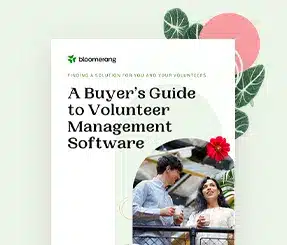How To Survive Nonprofit Founder's Syndrome


Full Platform Overview Chat With Us



Full Platform Overview Chat With Us




Nonprofit Founder’s Syndrome is a common treatable disease. Frequently carried as a recessive gene by passionate, dedicated, dynamic, and visionary entrepreneurial leaders. Commonly found paired with groundbreaking new ideas to solve social problems. Often associated with new fledgling organizations. If seen in an established organization, it may be associated with a strong desire or internal quest for change or growth.
While it’s most often found among founders, the disease can also manifest itself in non-founders who have been in a leadership role for 7 or more years with an organization or clusters of board members who identify themselves as founding board members, founders, or co-founders. Founder’s syndrome is also not limited to nonprofits and can be found in the corporate world.
Energetic, charismatic, fearless leaders fueled by ambition, determination, and conviction to fill a need and change the world. They do the hardest job of all – build something where there was nothing. To their detractors, they can be bold, stubborn, and opinionated. To their fans, they are charming, magnetic, and inspiring.
The Founder: He/she worries the organization would fall apart without them. They may have their identity wrapped up with the organization. Indeed, to donors and the community at large, the founder’s identity may be synonymous with the organization. In extreme cases, they have invested so much of their life into the organization that they do not have a plan B for what they will do when they leave it.
The Board of Directors: They fear losing the founder’s wealth of knowledge and expertise. They’re afraid the founder’s strong relationships with donors will be lost. They may be resistant to change period or be resenting the extra burden and workload of transition planning and finding, hiring, onboarding, and managing a new Executive Director.
The New Incoming Executive Director: The new Executive Director feels like he/she has been called over to babysit a newborn baby only the helicopter parents will not hand over the baby and leave the house. He/she may be questioning why they took the job in the first place and if they’ll ever be allowed to run the organization. He/she may be planning their departure.
In most scenarios, someone leaves. It could be the new incoming Executive Director who resigns, or it might be the founder who retires or moves on to greener pastures. How can you survive if your organization is afflicted with this syndrome?
Congratulations on building something from literally nothing. Yay, you! Think back to why you started your organization. You wanted to change something. You didn’t start the organization to have a job for the rest of your life. Truth bomb: if your organization cannot survive and thrive without you at the helm it doesn’t deserve to exist. I’m sorry if that sounds harsh. Eleven years ago, I left the organization I founded and led for 12 years. When I decided to leave I told myself: “If it cannot thrive without me it doesn’t deserve to survive.” If that felt like a bitter pill to swallow here’s the frosting on the cake: seeing the organization not just survive but thrive AFTER you step away is your single biggest achievement. It is your legacy.
Will stepping away be easy? No. Will there be mistakes? Yes, and they may not all be yours. The good news is that you can work with seasoned experts to help make an executive transition as graceful as possible. This is a chance for new leadership to step up, for new opportunities to flourish and for your legacy to live on.
Suffering from a bad case of founder’s syndrome or wanting to vaccinate yourself from ever coming down with it? Join Rachel for a special webinar: “How to Survive Nonprofit Founder’s Syndrome.”

Comments
Anon Ymous
Rachel Muir
Lacie
Rachel Muir
Rachel Muir
D
Julie
Fred Wantaate
Rachel Muir
Andy Robinson
Rachel Muir
Wendy Hehemann